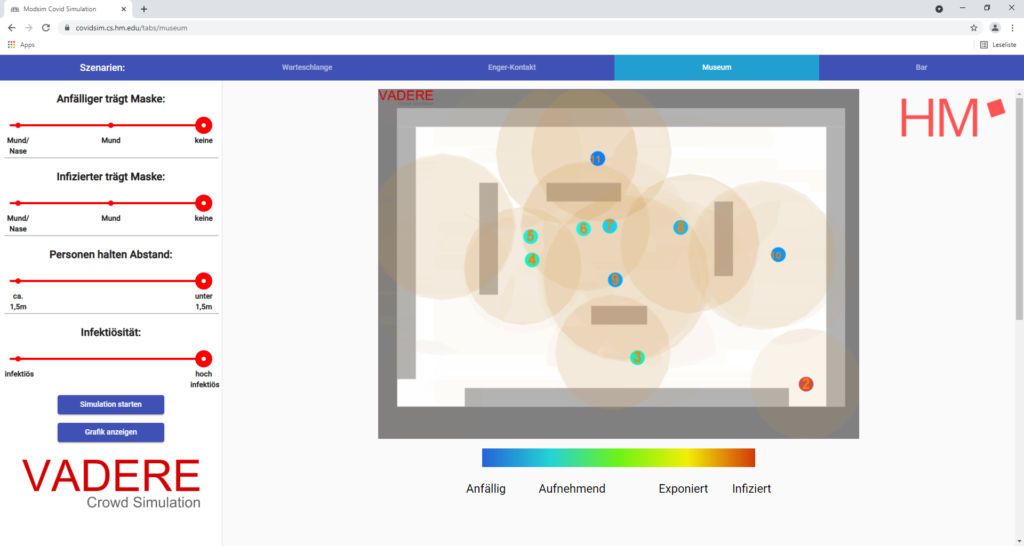We combine microscopic crowd simulation with a model for airborne transmission of pathogens, e.g., the coronavirus.
Student Projects
Students at the Munich University of Applied Sciences used the transmission model in Vadere as part of their project work. They developed an interactive tool and produced interesting videos. Have a look for yourself!
Interactive Slider Tool

The slider tool allows to compare the risk of exposure for different everyday situations in times of the Covid-19 pandemic. For example, you can try out the effect of physical distancing and wearing masks when visiting a museum or a bar.
Check out the Slider Tool (German only).
Modeling helps to understand and explain the spread of COVID-19
Research Project CovidSim
Within the scope of the research project CovidSim, Team HF, accu:rate and researchers from the Vadere team developed a model for airborne disease transmission in crowds. This short video (German only) explains how the model can be applied and what we can learn from simulating typical everyday situations, e.g. pedestrians queuing up in front of a counter or moving through a train station.
CovidSim was funded by the German Federal Ministry of Education and Research.
Transmission Model
How does the transmission model work? For a detailed description of the model and its implementation see: